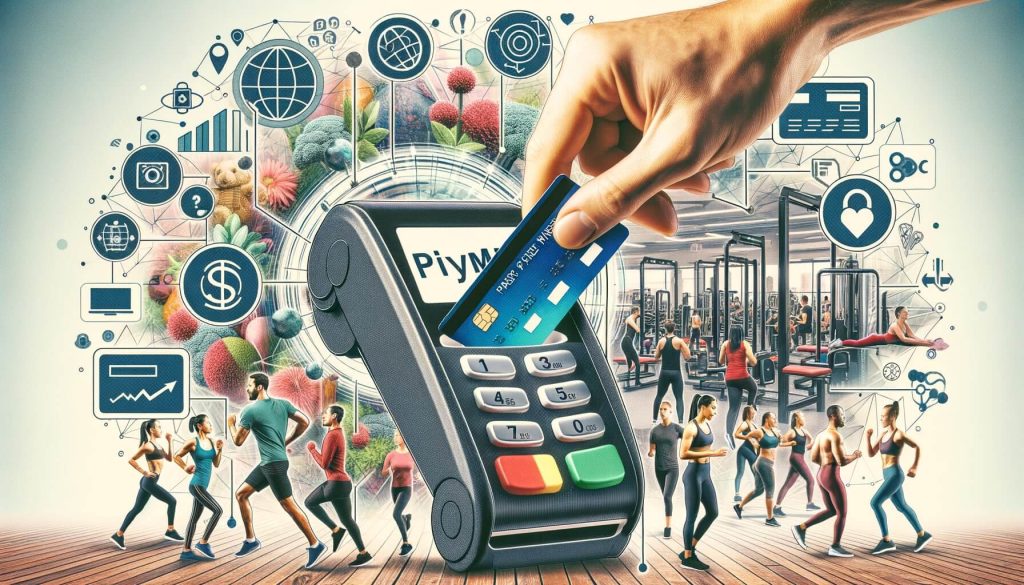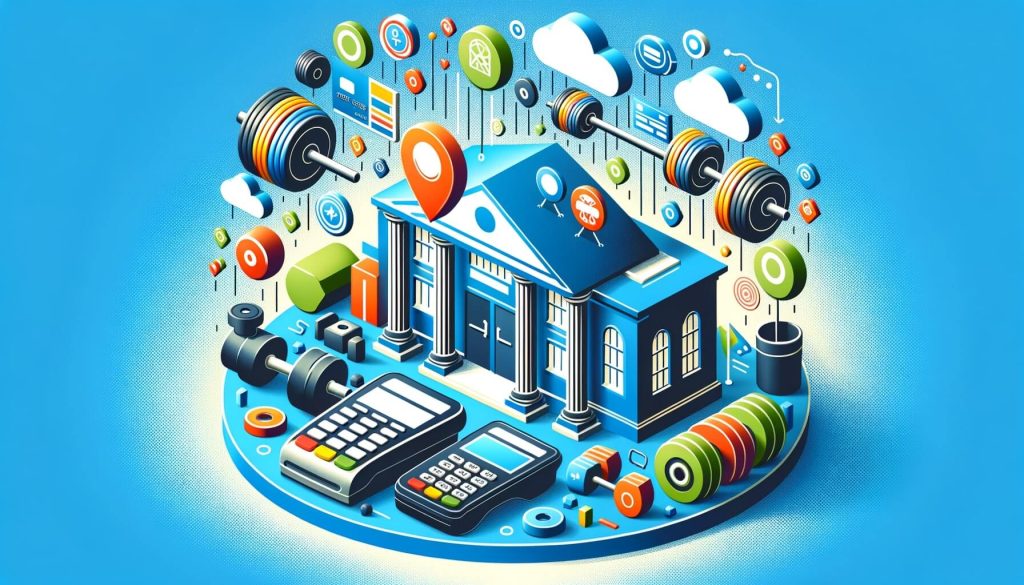
By dev February 5, 2025
Setting up payment processing for a new gym is a crucial step in ensuring smooth financial transactions and providing convenience to your members. In today’s digital age, where cashless payments are becoming increasingly popular, it is essential for gyms to offer a variety of payment options to cater to the diverse needs of their members.
This comprehensive guide will walk you through the process of setting up payment processing for your new gym, covering everything from understanding the importance of payment processing to handling refunds and chargebacks.
Understanding the Importance of Payment Processing for a Gym

Payment processing plays a vital role in the success of any business, and gyms are no exception. By offering convenient and secure payment options, you can attract more members and enhance their overall experience. Here are some key reasons why payment processing is important for your gym:
1. Convenience for Members: In today’s fast-paced world, people value convenience above all else. By offering various payment methods such as credit cards, debit cards, and mobile payments, you make it easier for your members to pay for their memberships and services.
2. Increased Revenue: By accepting different payment methods, you open up opportunities to attract a wider range of customers. Some individuals may prefer to pay with their credit cards to earn rewards or take advantage of installment plans, while others may prefer mobile payments for their convenience. By accommodating these preferences, you can increase your revenue potential.
3. Streamlined Operations: Implementing a payment processing system can streamline your gym’s operations by automating tasks such as membership billing and recurring payments. This saves time and reduces the risk of human error, allowing you to focus on providing excellent service to your members.
4. Improved Cash Flow: With an efficient payment processing system in place, you can ensure timely and accurate payments from your members. This helps maintain a steady cash flow, allowing you to meet your financial obligations and invest in the growth of your gym.
Choosing the Right Payment Processor for Your Gym

Selecting the right payment processor is crucial for the success of your gym. Here are some factors to consider when choosing a payment processor:
1. Fees and Pricing: Compare the fees and pricing structures of different payment processors. Look for transparent pricing with no hidden charges. Consider factors such as transaction fees, monthly fees, and setup fees to determine the most cost-effective option for your gym.
2. Integration with Gym Management Software: Ensure that the payment processor you choose integrates seamlessly with your gym management software. This integration allows for efficient management of memberships, billing, and reporting.
3. Security and Compliance: Payment security is of utmost importance to protect your gym and your members’ sensitive information. Look for payment processors that comply with industry standards such as Payment Card Industry Data Security Standard (PCI DSS) and offer advanced security features like tokenization and encryption.
4. Customer Support: Consider the level of customer support provided by the payment processor. Look for a provider that offers 24/7 support and has a reputation for excellent customer service. This ensures that any issues or concerns can be addressed promptly.
Setting Up a Merchant Account for Your Gym

To accept credit and debit card payments, you will need to set up a merchant account. A merchant account is a type of bank account that allows you to accept card payments and have the funds deposited into your business bank account. Here’s a step-by-step guide to setting up a merchant account for your gym:
1. Research Merchant Account Providers: Research different merchant account providers and compare their offerings. Look for providers that specialize in serving gyms or fitness businesses, as they will have a better understanding of your specific needs.
2. Gather Required Documents: Merchant account providers typically require certain documents to verify your business and ensure compliance. These documents may include your gym’s business license, tax identification number, bank statements, and proof of address.
3. Apply for a Merchant Account: Once you have gathered the necessary documents, submit an application to the chosen merchant account provider. Provide accurate and complete information to expedite the approval process.
4. Undergo Underwriting and Approval: The merchant account provider will review your application and conduct underwriting to assess the risk associated with your gym. This process may involve a credit check and verification of the provided documents. Once approved, you will receive your merchant account details.
5. Set Up Payment Gateway: A payment gateway is a software application that securely connects your gym’s website or point-of-sale system to the payment processor. Work with your merchant account provider to set up the payment gateway and integrate it with your gym management software.
6. Test and Launch: Before going live, thoroughly test the payment processing system to ensure that it functions smoothly. Test different payment methods, process transactions, and verify that funds are being deposited into your business bank account. Once everything is working correctly, you can launch your payment processing system.
Integrating Payment Processing Systems with Gym Management Software

Integrating your payment processing system with your gym management software is essential for efficient operations and accurate financial reporting. Here’s a guide to integrating payment processing systems with gym management software:
1. Choose Compatible Software: When selecting gym management software, ensure that it is compatible with your chosen payment processor. Look for software that offers built-in integrations or APIs (Application Programming Interfaces) to facilitate seamless integration.
2. Set Up API Credentials: API credentials are unique codes provided by your payment processor that allow your gym management software to communicate with the payment gateway. Obtain the API credentials from your payment processor and enter them into your gym management software.
3. Configure Payment Settings: Within your gym management software, configure the payment settings according to your preferences. This includes setting up membership billing cycles, payment frequencies, and any additional fees or discounts.
4. Test Integration: Before going live, test the integration between your gym management software and payment processing system. Process test transactions, verify that payments are being recorded accurately, and ensure that membership billing is functioning correctly.
5. Train Staff: Provide training to your staff on how to use the integrated payment processing system. Familiarize them with the features, payment options, and troubleshooting steps. This ensures that your staff can assist members with any payment-related inquiries or issues.
Ensuring Payment Security and Compliance for Your Gym
Payment security and compliance are critical when setting up payment processing for your gym. Protecting your members’ sensitive information and ensuring compliance with industry standards builds trust and safeguards your gym’s reputation. Here are some measures to ensure payment security and compliance:
1. PCI DSS Compliance: Payment Card Industry Data Security Standard (PCI DSS) is a set of security standards that all businesses accepting card payments must adhere to. Ensure that your payment processor is PCI DSS compliant and follows the necessary security protocols.
2. Tokenization and Encryption: Tokenization and encryption are security measures that protect cardholder data during transmission and storage. Tokenization replaces sensitive card data with a unique identifier (token), while encryption scrambles the data to make it unreadable to unauthorized individuals. Choose a payment processor that offers these security features.
3. Secure Network and Systems: Implement robust firewalls, antivirus software, and intrusion detection systems to protect your gym’s network and systems from cyber threats. Regularly update software and firmware to address any security vulnerabilities.
4. Employee Training: Train your staff on payment security best practices, such as not storing cardholder data, using strong passwords, and recognizing phishing attempts. Regularly remind them of the importance of maintaining payment security and staying vigilant against potential threats.
5. Regular Security Audits: Conduct regular security audits to identify any vulnerabilities in your payment processing system. Engage a third-party security firm to perform penetration testing and vulnerability assessments. Address any identified weaknesses promptly to maintain a secure environment.
Accepting Different Payment Methods at Your Gym
To cater to the diverse preferences of your members, it is essential to accept a variety of payment methods at your gym. Here are some popular payment methods you should consider implementing:
1. Credit and Debit Cards: Accepting major credit and debit cards is a must for any gym. Ensure that your payment processor supports all major card networks such as Visa, Mastercard, American Express, and Discover.
2. Mobile Payments: With the rise of smartphones, mobile payment options have gained popularity. Consider accepting mobile payment methods such as Apple Pay, Google Pay, and Samsung Pay. These methods allow members to make payments using their smartphones, enhancing convenience.
3. E-Wallets: E-wallets are digital wallets that store payment information and allow users to make payments online or in-store. Popular e-wallets include PayPal, Venmo, and Alipay. Integrating these e-wallets into your payment processing system can attract tech-savvy members.
4. Bank Transfers: Some members may prefer to pay directly from their bank accounts through bank transfers. Offer this option by integrating your payment processing system with Automated Clearing House (ACH) payment solutions.
5. Cash and Checks: While cash and checks are becoming less common, some members may still prefer these traditional payment methods. Ensure that your gym has a process in place to accept and process cash and check payments securely.
Setting Up Recurring Payments and Membership Billing
Recurring payments and membership billing are essential for gyms to ensure a steady revenue stream and provide convenience to their members. Here’s a guide to setting up recurring payments and membership billing:
1. Determine Billing Cycles: Decide on the billing cycles for your gym memberships. Common options include monthly, quarterly, semi-annual, and annual billing. Consider offering discounts for longer-term commitments to incentivize members to choose extended billing cycles.
2. Set Up Automated Billing: Automate the billing process by setting up recurring payments for your members. This eliminates the need for manual invoicing and reduces the risk of missed payments. Work with your payment processor and gym management software to configure automated billing.
3. Notify Members: Inform your members about the recurring payment setup and the billing cycle they have chosen. Clearly communicate the payment amount, frequency, and any applicable terms and conditions. Provide them with the option to opt-out or change their billing preferences if needed.
4. Provide Payment Reminders: Send payment reminders to your members a few days before their scheduled payment date. This serves as a gentle reminder and helps prevent any unintentional missed payments.
5. Monitor Failed Payments: Keep track of failed payments and promptly follow up with members to resolve any issues. Implement a process to handle declined payments, such as contacting the member to update their payment information or reschedule the payment.
Handling Refunds and Chargebacks in Your Gym
Refunds and chargebacks are an inevitable part of running a gym. It is essential to have clear policies and procedures in place to handle these situations efficiently and maintain positive relationships with your members. Here’s a guide to handling refunds and chargebacks:
1. Refund Policy: Establish a clear refund policy that outlines the circumstances under which refunds will be issued. Communicate this policy to your members during the signup process and display it prominently on your website and at your gym.
2. Process Refunds Promptly: When a member requests a refund, process it promptly and efficiently. Clearly communicate the timeline for refund processing and keep the member informed throughout the process.
3. Document Refund Requests: Maintain a record of all refund requests, including the reason for the refund, the date of the request, and the action taken. This documentation helps track trends and identify areas for improvement.
4. Chargeback Prevention: Chargebacks occur when a member disputes a charge with their card issuer. To prevent chargebacks, ensure that your billing descriptors are clear and recognizable on members’ card statements. Provide excellent customer service to address any concerns promptly and avoid disputes.
5. Chargeback Management: In the event of a chargeback, respond promptly to the notification from your payment processor. Provide all necessary documentation, such as signed membership agreements, proof of service, and communication records, to support your case. Familiarize yourself with the chargeback process and adhere to the timelines and requirements set by your payment processor.
FAQs
Q1. What payment methods should my gym accept?
A1. To cater to the diverse preferences of your members, consider accepting credit and debit cards, mobile payments, e-wallets, bank transfers, cash, and checks.
Q2. How can I ensure payment security for my gym?
A2. Ensure that your payment processor is PCI DSS compliant, implement tokenization and encryption, secure your network and systems, train your staff on payment security best practices, and conduct regular security audits.
Q3. How do I set up recurring payments for gym memberships?
A3. Work with your payment processor and gym management software to set up automated recurring payments. Determine the billing cycles, notify members, provide payment reminders, and monitor failed payments.
Q4. What should I do if a member requests a refund?
A4. Process refunds promptly, document refund requests, and maintain clear refund policies. Communicate the refund process to the member and keep them informed throughout.
Q5. How should I handle chargebacks in my gym?
A5. To prevent chargebacks, ensure clear billing descriptors and provide excellent customer service. In the event of a chargeback, respond promptly, provide supporting documentation, and follow the chargeback management process set by your payment processor.
Conclusion
Setting up payment processing for a new gym is a crucial step in ensuring smooth financial transactions and providing convenience to your members.
By understanding the importance of payment processing, choosing the right payment processor, setting up a merchant account, integrating payment processing systems with gym management software, ensuring payment security and compliance, accepting different payment methods, setting up recurring payments and membership billing, and handling refunds and chargebacks, you can create a seamless payment experience for your members while maximizing revenue and streamlining operations.
By following the comprehensive guide provided in this article, you can confidently set up payment processing for your new gym and focus on providing exceptional fitness experiences to your members.